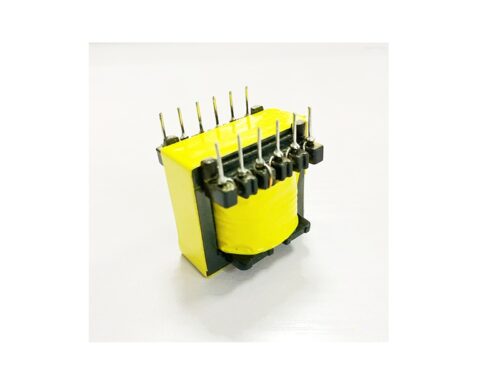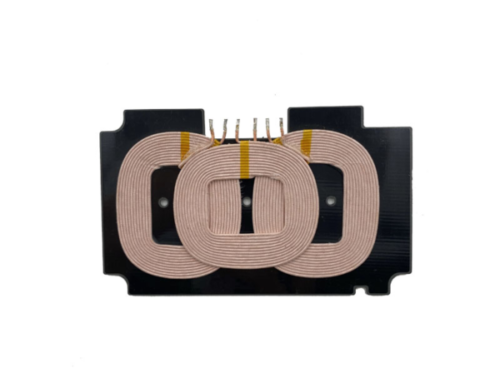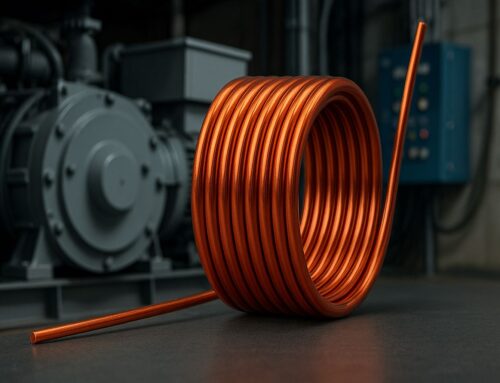In today’s rapidly evolving technological landscape, efficiency is paramount. Devices and systems are becoming smaller, faster, and more powerful, creating a strong demand for more compact and energy-efficient components. Power systems, especially, are tackling these challenges to meet the needs of modern applications in electronics, renewable energy, and automotive systems.
To address these challenges, engineers have developed advanced electrical components that allow for better energy conversion. Key innovations for the performance improvement and efficiency of the power system. These tools operate at a certain frequency, enabling them to transmit electricity more effectively while maintaining a smaller size and lighter weight.
What Is a High-Frequency Transformer?
A high-frequency transformer is an electrical device designed to transfer energy through electromagnetic induction at higher frequencies than traditional transformers. These transformers typically operate at frequencies ranging from tens of kilohertz to several megahertz. This stands in contrast to low-frequency transformers, which operate at 50Hz or 60Hz, making high-frequency transformers more efficient, smaller, and lighter.
With higher frequencies, engineers can reduce the size of the transformer’s core and windings, resulting in a more compact design. This makes high-frequency transformers particularly valuable in industries with space constraints, such as consumer electronics, telecommunications, and electric vehicles.
High-frequency transformers find common use in power electronics, especially in switching power supplies. These devices can efficiently convert AC to DC or vice versa, depending on the needs of the electronic device. Their ability to work at higher frequencies makes them ideal for applications requiring compact and efficient power conversion.
How High-Frequency Transformers Work
High-frequency transformers operate based on electromagnetic induction, a principle similar to that of traditional transformers. However, the key difference lies in the frequency at which they operate.
-
Input Power: The process begins when an alternating current (AC) input is supplied to the primary winding of the transformer.
-
Frequency Conversion: An oscillator circuit converts the AC power into high-frequency signals.
-
Magnetic Field Induction: The high-frequency current creates a rapidly changing magnetic field within the transformer’s core.
-
Energy Transfer: The magnetic field induces a current in the secondary winding, transferring energy to the load.
-
Output Power: The converted power can now be used for its intended application, whether that’s powering an electronic device, motor, or other components.
Because high-frequency transformers operate at higher frequencies, they achieve high efficiency with minimal energy loss. This frequency conversion process enables the transformer to deliver more power in a smaller physical space, making them highly suitable for modern applications.
Advantages of High-Frequency Transformers
High-frequency transformers offer several advantages compared to traditional low-frequency transformers. Here’s a closer look at these benefits:
1. Compact and Lightweight
High-frequency transformers are significantly smaller and lighter than their low-frequency counterparts. This is because the core material and windings can be reduced in size while maintaining the required performance. This compact design is especially useful for applications where space is limited, such as in mobile devices, electric vehicles, and consumer electronics.
2. Improved Efficiency
One of the key benefits of high-frequency transformers is improved efficiency. These transformers reduce core losses, hysteresis losses, and eddy current losses, which are more pronounced in low-frequency transformers. Operating at higher frequencies allows them to transfer more power with less energy wasted as heat. As a result, high-frequency transformers offer lower operating costs and better overall performance.
3. Reduced Heat Generation
High-frequency transformers generate significantly less heat compared to traditional transformers. This reduced heat generation means that fewer cooling systems are required, simplifying the design and lowering the overall system complexity. For applications like LED drivers and solar inverters, efficient heat management is essential, and high-frequency transformers help keep temperatures in check.
4. Faster Switching
High-frequency transformers enable faster switching in power electronics. Faster switching times are crucial for improving the performance of DC-DC converters, inverters, and other high-speed systems. By enabling quicker switching, these transformers enhance the response time of the system, leading to better overall efficiency.
5. Lower Cost
Due to their compact size and reduced need for complex cooling systems, high-frequency transformers can often be produced at a lower cost than traditional transformers. This cost-effectiveness is particularly important in industries like consumer electronics, where manufacturers constantly seek ways to reduce production costs while maintaining high performance.
Key Applications of High-Frequency Transformers
High-frequency transformers find use in a variety of applications. Some of the most common include:
1. Power Supply Systems
High-frequency transformers are often used in switching power supplies (SPS). These devices are present in almost every modern electronic device, including laptops, smartphones, and televisions. By utilizing high-frequency transformers, these power supplies can convert electrical power more efficiently and in a smaller form factor.
Switching power supplies rely on these transformers to convert AC voltage into DC voltage or vice versa, depending on the device’s requirements. Operating at higher frequencies allows the transformers to be much smaller and lighter than traditional transformers, making them ideal for portable devices.
2. Electric Vehicles (EVs)
In electric vehicles, high-frequency transformers play a crucial role in battery chargers and inverters. They help convert DC power stored in the vehicle’s battery into AC power for the motor, and vice versa. Their high efficiency and compact size make them particularly suited for electric vehicles, where minimizing both space and weight is essential.
3. Telecommunications
High-frequency transformers are integral to telecommunication systems. They ensure efficient signal transmission and perform impedance matching. For example, in radio-frequency (RF) circuits, high-frequency transformers are used to match the impedance between components, ensuring optimal signal transfer with minimal loss.
4. Medical Equipment
High-frequency transformers are often used in medical devices such as MRI machines and X-ray equipment. These transformers provide the necessary power for imaging systems while maintaining a compact size and high efficiency. Medical devices requiring precise power control also benefit from the high-speed switching capabilities of these transformers.
5. Renewable Energy Systems
In solar inverters and wind power systems, high-frequency transformers are used to convert the direct current (DC) produced by solar panels or wind turbines into alternating current (AC) for integration with the power grid. Their ability to operate efficiently at high frequencies ensures that renewable energy systems are cost-effective and compact.
Selecting the Right High-Frequency Transformer
When selecting a high-frequency transformer for a specific application, several factors need to be considered:
1. Power Rating
The transformer should be capable of handling the required power for the application. High-frequency transformers come in a variety of power ratings, from small devices used in consumer electronics to large systems designed for industrial use.
2. Core Material
The core material of the transformer influences its performance. Materials like ferrite and nanocrystalline are commonly used due to their excellent magnetic properties at high frequencies. The right core material ensures optimal efficiency and performance.
3. Frequency Range
Different applications require different frequency ranges. Some systems need transformers that operate in the kilohertz range, while others require megahertz frequencies for radio-frequency systems. It’s essential to select a transformer designed for the appropriate frequency range.
4. Efficiency
Efficiency is a critical factor when choosing a transformer. High-frequency transformers are designed to minimize energy losses and maximize energy transfer. Look for transformers with low core losses, switching losses, and hysteresis losses to ensure optimal performance.
5. Size and Weight
For space-constrained applications, the size and weight of the transformer are crucial considerations. High-frequency transformers are generally smaller and lighter than traditional transformers, making them ideal for compact systems.
Future Trends in High-Frequency Transformer Technology
As technology advances, several trends are likely to shape the future development of high-frequency transformers:
1. Integration with Power Electronics
High-frequency transformers will increasingly be integrated with advanced power electronics. This integration will enhance performance, enabling faster switching, better energy conversion, and more compact designs.
2. Advanced Materials
Researchers are exploring new core materials, such as nanocrystalline and amorphous alloys, which offer lower losses and better performance at high frequencies. These materials will continue to improve the efficiency of high-frequency transformers.
3. Smart Transformers
In the future, high-frequency transformers may incorporate smart technology. These transformers will dynamically adjust their performance in real-time, optimizing energy use and improving system efficiency.
Conclusion
High-frequency transformers are essential components in modern electronics and power systems. They offer several benefits, including compact size, improved efficiency, and reduced heat generation. By operating at higher frequencies, these transformers enable superior performance across a wide range of applications, making them a critical technology for the future of power conversion.





Leave A Comment